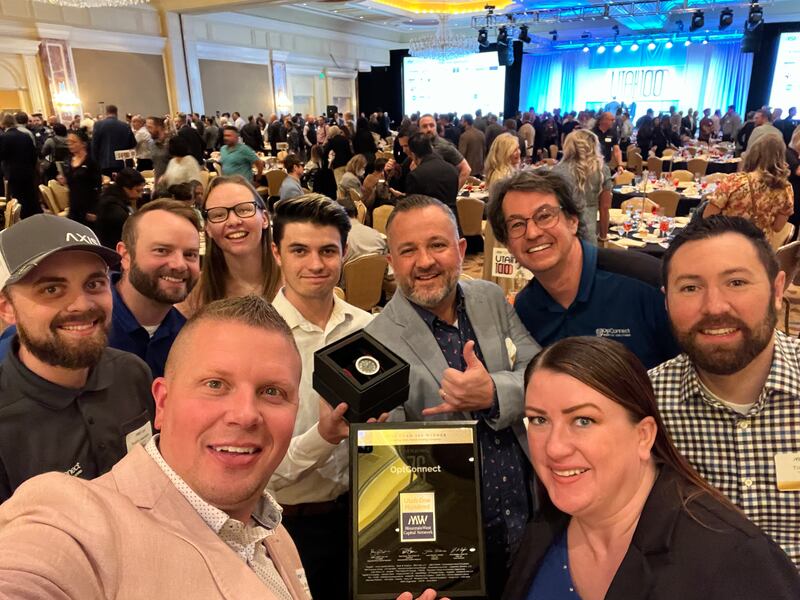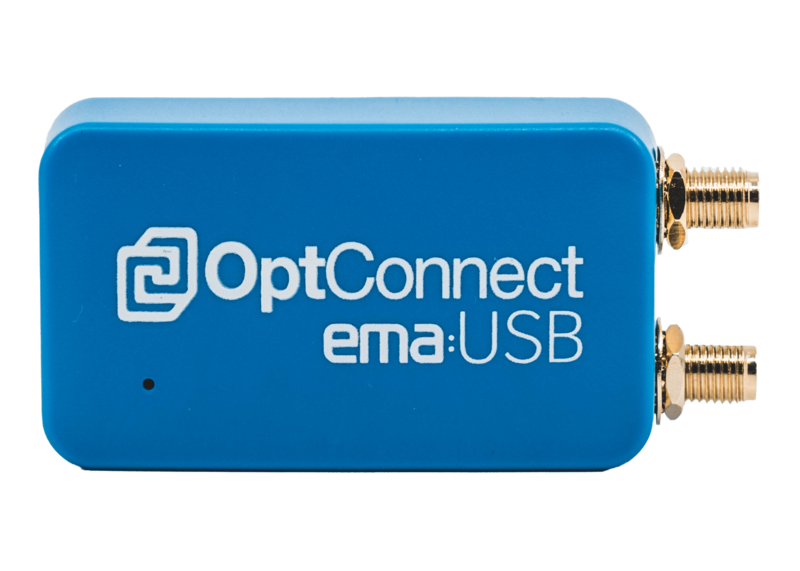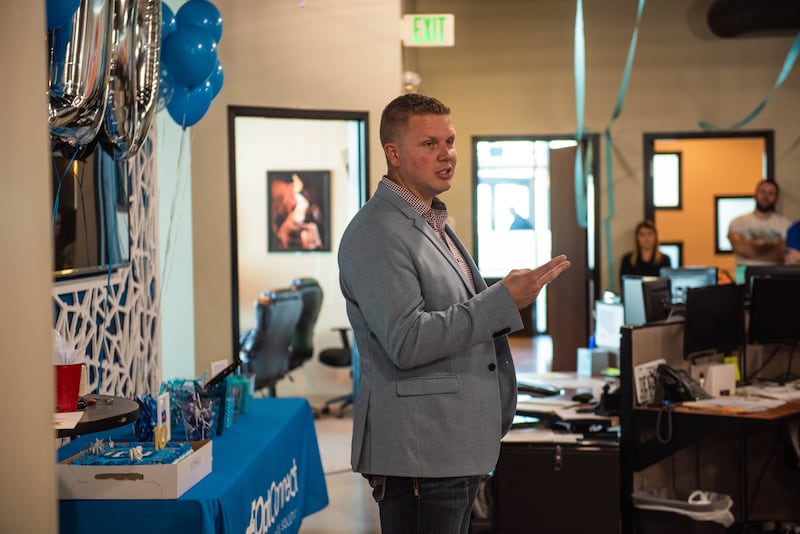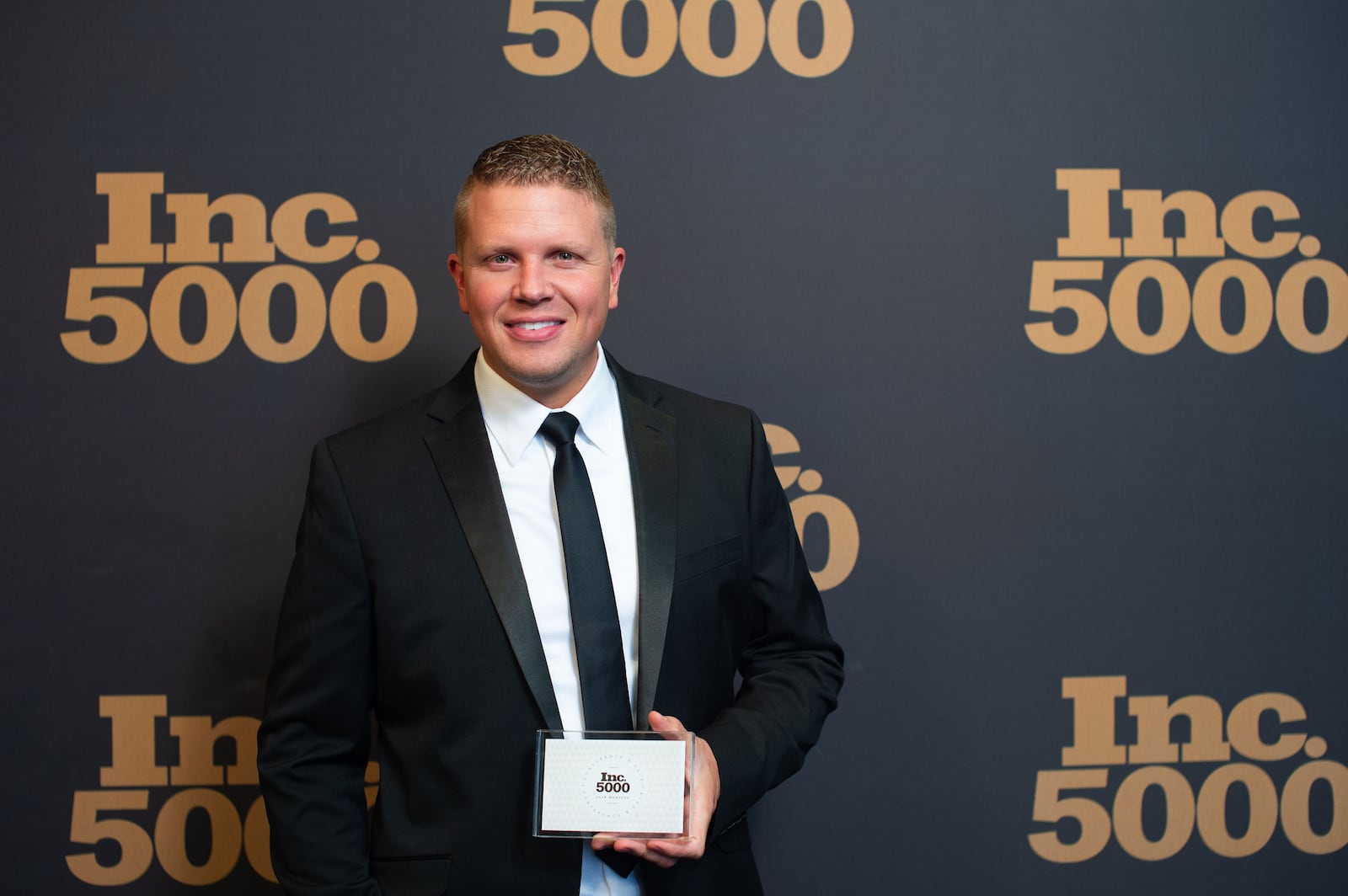This story appears in the May 2025 issue of Utah Business. Subscribe.
In 2014, three years before Chris Baird took over as CEO of OptConnect, an OpenSSL security vulnerability called Heartbleed was discovered. This bug allowed attackers to read portions of a server’s memory that could contain sensitive data like encryption keys, passwords and other personal information. Affected companies included Tumblr, Google, Yahoo, Intuit, Dropbox, Netflix and Facebook.
OptConnect’s internet gateway devices were not vulnerable. However, the bug still presented a consequence the team hadn’t expected: thousands of inbound pings were received worldwide as curious state-sponsored hackers and others scoured the internet including their network, and their devices locked up in response. While no passwords, credit card numbers or other data was compromised, the ability to communicate — to connect to the internet, the company’s sole purpose — went away completely.
“In two hours, OptConnect went from receiving two customer service phone calls an hour to hundreds, and that number kept going up,” Baird says. “We were completely caught unaware.”
The company had to create a solution fast. Baird huddled with a few others in a room and set up a whiteboard in a corner. At this moment, a Donald Rumsfeld quote rang familiar to Baird: “There are known knowns; there are things we know that we know. We also know there are known unknowns; that is to say we know there are some things we don’t know. But there are also unknown unknowns — the ones we don’t know we don’t know.”
They’d landed in the latter part of those truths: The OptConnect team didn’t yet know what they didn’t know. Still, they were fully committed to discovering what needed to be discovered and solved, a problem in need of a fast resolution.

“We’d jeopardized our customers’ businesses, as they could no longer connect to the internet. They couldn’t dispense cash or sell products,” Baird says. “When millions of locations suddenly stop working, revenue also stops. There was a lot of shouting. It was chaos; a digital version of a pandemic.”
Baird and his crew placed a technical support call that included partners and hardware manufacturer engineers. The call ended up lasting 96 hours from start to finish — four straight days.
“At one point, I needed to lie down, and an employee brought in a giant roll of packing bubbles from the shipping department. I stretched out on it and slept for an hour,” Baird says. He only left his desk during that long stretch for bathroom breaks and didn’t go home until the problem was solved.
Later, the OptConnect team realized that taking 96 hours to create a resolution in their industry was infinitely faster than what their competitors were managing. Calls at OptConnect switched from customers demanding answers and connectivity to brand-new customers wanting to move whole portfolios to OptConnect’s fixed and functional network.
“That was our DNA-altering experience,” Baird says, as it allowed the company to realize it needed to go even deeper into areas like security, functionality and reporting. “We couldn’t wait around for customers to tell us about the problems they were having. We needed to know already and tell them we had resolved them. That differentiated us in the marketplace.”
It’s that kind of quick thinking and resolve that initially led brothers and self-described serial entrepreneurs Burt and Tim Matthews, co-founders of Grant Victor, OptConnect’s parent company, to ask Baird to defer going to college and work under their tutelage starting in 2006. In 2011, as the Matthews brothers brought in strategic private equity partners and stepped away from daily operations, Baird took over leadership of the OptConnect business unit. When OptConnect was carved out from Grant Victor and acquired by Graham Partners in 2017, Baird was formally named CEO and president.
“Our focus was utilizing the opportunity within the ATM industry in our early days, but that’s a small part of the customer base of OptConnect today ... The company has diversified in so many ways and mushroomed into so many sectors.”
— Tim Matthews
“He was a natural leader — energetic and happy, with a can-do attitude — and quickly rose as a young leader of the organization,” Burt says. “We have learned you can’t train kindness or happiness. You can train employees in all other ways but not to be naturally good with customers. Chris was honest to the core, and customers loved that about him.”
Fourteen years later, both Matthews brothers agree that hiring Baird when he was just 21 was one of the most solid choices they ever made. Even though Baird didn’t have a defined role at first, he easily filled in where he was needed. Sometimes, that meant taking a customer service or sales call, while other times, it meant helping out with shipping.
“If the garbage needed to be emptied, Chris would stay after business had ended and empty the garbage. If shipments needed to be taken to the airport because we had missed the FedEx cut-off, he would be the one to hop in his car and drive to the airport,” Burt says. “He wasn’t above any of that. Nothing was too little for him to do.”
The road to connectivity
Through its routers, modems, antennas, SIM cards and other products, OptConnect enables its customers to access the internet in remote locales without telephone lines. The road to connectivity has been long — and it started with ATMs.
In the mid-1990s, Burt and Tim owned high-end convenience stores with ATMs inside each. By the time they asked Baird to join them, they’d sold their stores and switched to operating and servicing ATMs, which proved infinitely more profitable.
The Matthews brothers were determined to discover a way to connect their ATMs without using phone lines. Staying connected was important for verifying that sufficient funds were available, but connecting via a telephone line was costly and cumbersome. Both were quite confident a better way existed, but it took a lot of brainstorming to figure out what it was.
“On a very late night, exhausted with all we’d done already, the light finally went on,” Tim says. If they could provide a permanent wireless solution to ATM merchants, they could eliminate the need for phone lines. Considering that there were over 425,000 ATMs in the United States in 2009, it was a huge opportunity. They offered a shortcut by providing a box with a cellular module and a monthly wireless plan.

“We created marketing material that said, ‘Cut the phone lines, no upfront cost, $25 a month for wireless connectivity,’ and the response we received in return was almost too much for us to handle,” Burt says. “It required an incredible amount of capital too. It was $150 for each box, and we were shipping 1,000 a month, a $150,000 monthly investment.”
Just like that, the concept of OptConnect was created. News of the solution traveled rapidly.
“Over time, 20 locations became 100, and 100 quickly turned into 1,000,” Baird says. “Before we knew it, we connected thousands of new locations monthly.”
Assembling the plane while flying it
For a time, much of Baird’s job centered on ATMs. He worked with the Matthews brothers in sales and operations at ATMequipment.com (renamed NextATM) and eGlobal ATM Services. If the machine didn’t function correctly or broke, he was onsite with an armored car, down on hands and knees to work on it.
“There was a little anxiety there, having my back to the general public and being inside of a safe, working on a cash dispensing unit that might have an error,” Baird says. “From a security perspective alone, doing that always made my parents nervous.”
At the time, ATM servicing was hardly an established industry and there were no playbooks to follow. Because the industry was regulated by federal and state agencies, banks primarily owned and operated ATMs until 1997. Deregulation that same year created a slow roll of interest from independent contractors and like-minded merchants who were able to own and operate their own ATMs not owned by banks or financial institutions.
“The whole idea of an operator on an ATM was novel then,” Baird says. “We were building the plane as we were flying it, and the industry was evolving at the same time.”
By maintaining the machines, Baird learned to empathize with customers. It gave him an inkling of the stresses they were up against, of the necessity of keeping entire fleets of machines connected and dispensing. By the time connectivity inquiries began surfacing, he was already familiar with the complexities of keeping ATMs online and understood his customers’ pain points.
After a few years of operating almost exclusively in the ATM industry, OptConnect grew because the customers it attracted asked more of it. Because many of the contractors they serviced ran other businesses and routes, connectivity requests for additional services began pouring in.

“We started receiving calls asking us questions like, ‘Could you also connect my digital sign?’” Baird says. “Or, ‘Could you also connect my carpet cleaning rental unit?’ or, ‘Could you connect my coin counting machine, key cutting machine and dog collar engraving machine?’”
The OptConnect team listened to their customers, and the company expanded significantly. Now, OptConnect operates across over 50 end markets, expanding into new sectors each year and connecting millions of endpoints across the U.S. and beyond.
Skyscraper success requires a strong foundation
“Our focus was utilizing the opportunity within the ATM industry in our early days, but that’s a small part of the customer base of OptConnect today,” Tim says. “The company has diversified in so many ways and mushroomed into so many sectors.”
In 2024 alone, OptConnect acquired Chile-based M2M DataGlobal, significantly expanding the number of customers the company supports globally to over 10,000, and Netherlands-based Capestone, a provider of 4G and 5G IoT solutions active in over 60 countries. These achievements allowed the privately owned company to land on the Inc. 5000 list in 2024, its seventh year in a row, further recognizing its sustained growth and extraordinary performance.
Baird believes OptConnect has the right products in place and has built the best possible solution for its customers. He foresees it growing to connect many millions more devices, continuing to attract large financial sponsors that want to underwrite the story they’re telling, and continuing to attract top talent across the state and beyond.
“What we do at OptConnect will far outlive my ability to deliver on that vision,” Baird says. “I think of it as a skyscraper rising. When we broke ground, we didn’t go straight up. We went down to bedrock and ensured we had a solid foundation first, then built on that. It took a few years to get back to ground level, but we knew what we had once we were there, and we could build more than a story or two. Now, we’re building a high-rise.”

